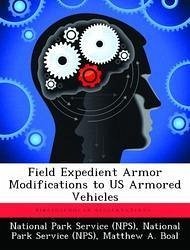Nicht lieferbar

Field Expedient Armor Modifications to Us Armored Vehicles
Versandkostenfrei!
Nicht lieferbar
This thesis examines field expedient modifications to US armored vehicles by US Army and US Marine Corps armored vehicle crewmen during World War II, the Korean War and the Vietnam War. Two major categories of modifications are examined. They are modifications to improve the primary protection of armored vehicles and modifications to improve the secondary protection of armored vehicles. Some of the specific types of modifications analyzed are hedgerow cutters, sand bagging, addition or modification of ancillary weapons, communications improvements, camouflage, rocket propelled grenade screens,...
This thesis examines field expedient modifications to US armored vehicles by US Army and US Marine Corps armored vehicle crewmen during World War II, the Korean War and the Vietnam War. Two major categories of modifications are examined. They are modifications to improve the primary protection of armored vehicles and modifications to improve the secondary protection of armored vehicles. Some of the specific types of modifications analyzed are hedgerow cutters, sand bagging, addition or modification of ancillary weapons, communications improvements, camouflage, rocket propelled grenade screens, and addition of concrete. This thesis determines that field expedient modifications to improve the primary protection of armored vehicles against the enemy's primary armor killing weapons were not effective during all three wars under study. Additionally, this thesis shows that field expedient modifications to improve the primary and secondary protection of armored vehicles against lesser threats were successful in some cases. The positive psychological impact on armored vehicle crews or field expedient modifications justified the time and resource allocation required for crews to conduct field expedient modifications during all of the conflicts considered.






